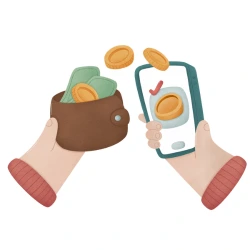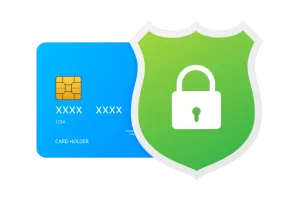
Zelle has become a prominent payment platform for small businesses across the US—in fact, a whopping 150 million payments were received by small businesses in 2022, totaling over $72 billion. Similarly, small businesses paying employees and rent through Zelle transacted 133 million payments, totaling over $87 billion. Given this high adoption rate, businesses can’t afford to have their Zelle accounts suspended. Suspensions can have a significant impact on business operations, making it impossible to send or receive payments.
However, suspensions on the platform are also a common occurrence for several different reasons. Most P2P platforms and their business account counterparts liberally apply suspensions for verification or security issues.
Your best bet to avoid cash flow problems due to a frozen account is to use a service geared toward business needs from the start. However, if you’re still using Zelle and suddenly find your account unnecessarily suspended, this guide can help you resolve any issues. We’ll help you identify why your account is locked and offer step-by-step advice on reinstating it.
Why Is My Zelle Account Suspended?
Since a suspended Zelle business account keeps you from sending or receiving payments, it can deter customers and hinder sales. In addition, late payments to employees, landlords, and suppliers can break trust in your most important business relationships.
To avoid a suspended account, knowing why Zelle freezes accounts is important. Here are the eight most common reasons for account suspensions.
1. Multiple Failed Login Attempts
Three unsuccessful login attempts to your account will trigger an automatic security suspension. Zelle assumes that as your account’s rightful owner, you know your password and login details. Of course, everyone makes a typo now and then, or maybe you can’t remember exactly which password you used. That’s why Zelle gives you three chances.
If you still don’t get it right after the third try, the platform assumes you’re a fraud trying to log in to a stranger’s account. To protect the account holder, the account is frozen until you can successfully verify ownership.
To prevent the hassle of suspension and verification, hit the “forgot password” option on the login page after the first or second failed login. You will get an email with instructions to create a new passcode.
You will most likely need to authenticate your password reset request by providing the CVV for your linked bank card. The CVV number refers to the last three digits printed on the bank of your debit card.
2. Attempted Security Compromise
If Zelle detects suspicious or potentially fraudulent activity on an account, suspending the account will protect the account holder and prevent any unauthorized transactions. While this is inconvenient for you, it’s certainly less convenient than losing all of your money to a hacker.
If Zelle suspects fraudulent activity, you will often receive a notice from the platform or your financial institution. You might also be advised to change your passcode for security reasons.
It is important to note that Zelle scammers can falsely notify you that your account is locked. Scammers might pose as Zelle service agents; in this case, they would ask for your password to unlock your account or ask you to make a refundable payment to verify your account. Note that Zelle will never ask for your password and will never ask you to make a payment to unblock or verify your account. Always use Zelle’s official contact details when contacting the platform for assistance.
3. Unsuccessful Account Verification
Like the last point, you can expect your account to be suspended if you do not comply with Zelle verification requirements. Zelle requires every user to verify their identity with accurate information. The platform may also periodically require users to provide additional documentation to confirm their identity or address, especially for business accounts.
If you delay providing what they require, your account will be suspended. In most cases, you can unlock your account by providing the necessary details or documents.
4. Unusual Activity
Account behavior that deviates from typical usage patterns can trigger an account suspension. This can include suddenly sending large amounts of money to unfamiliar recipients frequently—especially if you have not done this before. Frequently changing account details can be another Zelle security trigger.
Zelle will likely investigate the behavior or ask for verification. Work with Zelle to provide the information they need to unblock your account as quickly as possible.
5. Violation of Zelle Terms and Conditions
No user can sign up for a Zelle account without accepting Zelle’s terms and conditions. As part of the sign-up process, most users click “accept” without reading through the policy. But this means there may be small actions you’re unaware of that cause account suspension.
If you have a Zelle account suspended without knowing why, read through the terms and conditions to check if you’ve unintentionally broken any of the rules.
6. Not Using a Zelle Business Account
In line with the previous reason, one of the most common term violations is mixing business and personal account transactions. While the features of Zelle business and personal accounts are not immensely different, the platform strictly prohibits using P2P Zelle accounts for business transactions.
If Zelle finds that you have used a P2P Zelle account to receive payments from customers for goods or services, you will likely have your account suspended. Essentially, this is treated as an attempt at tax evasion and violates Zelle’s terms and conditions.
A further complication arises if your bank does not offer Zelle business accounts, as not all banks and financial institutions that offer P2P accounts also offer business counterparts. Thus, setting up a Zelle business account hinges on this dual functionality with your bank.
You will also need to open a business checking account with your financial institution if you don’t already have one and provide a phone number and email address separate from your personal Zelle account. You cannot use the same email and phone number for both accounts.
Once you have the above, the sign-up process is fairly simple. We suggest talking to your bank to complete the sign-up since the process may vary depending on the financial institution.
7. Involvement in High-Risk Industries
Zelle suspends accounts associated with scams or fraudulent activities to protect users from financial harm. In addition, Zelle prohibits the use of its service for certain businesses classified as “high-risk” trades. These include the sale of firearms, pharmaceuticals, sexually oriented materials, gambling, cryptocurrency, and pyramid schemes.
Even if your business is legal, the platform will suspend your Zelle account if it’s associated with trades that fall into this “high-risk category.” Other digital payment platforms and wallets such as Venmo, PayPal, Cash App, Apple Pay, and Google Pay also prohibit high-risk business transactions.
To prevent this, you can use a provider that offers safe and convenient payment processing catered to high-risk merchants.
8. Prolonged Periods of Inactivity
If your Zelle account remains inactive for more than 18 months, the platform will inactivate it. This helps Zelle maintain up-to-date verification on users, improves security, and keeps the platform compliant. This does not mean you can’t use Zelle P2P or Zelle for business again. Enroll again if you wish to reinstate your account.
How Do I Unsuspend My Zelle Account?
In many cases, Zelle will send you a notification regarding the suspension of your account. The email will provide you with a reason for suspension and instructions to fix the problem.
If you do not receive a notice or the problem is more complex than simply submitting a verification document, follow these steps:
1. Contact Zelle Customer Support
Contact Zelle’s customer support as soon as possible. You can do this by filling out a form on Zelle’s website support page or by calling the Zelle hotline.
Note that the call center only operates from 10 am to 10 pm EST and is not operational on Thanksgiving, Christmas, or New Year’s Day.
2. Confirm Your Identity & Provide Required Documents
Zelle will ask you to verify your identity as the account owner. They may require identity documentation, proof of address, or business documents.
3. Wait for Zelle’s Reply
Once you have provided everything required of you, wait for Zelle’s response. Your account might not be reactivated immediately, depending on the reason for suspension. Follow up with Zelle if you are unclear about any delays.
4. Use a Zelle Business Account
Register a Zelle business account if you are a small or medium-sized business using Zelle. Contact your bank or financial institution to check whether they offer the service. When signing up for a Zelle business account, check the transaction limits set by your bank. Every bank is different, and it’s worth knowing whether the sending and receiving limits can hinder cash flow or customer payments.
5. Upgrade to a Merchant Account
Zelle’s no-fee transactions make the platform seem ideal for saving on business expenses. However, some of the platform’s drawbacks can hinder more than help certain business types.
It goes without saying that account suspensions can hurt sales, cash flow, and inventory management and even break trust in business relationships. When you upgrade to a merchant account, you’ll have peace of mind knowing your business account won’t be suspended due to minor mishaps in security and logins.
Furthermore, if you’re classified as a high-risk business, a Zelle account may not even be an option. Zelle’s one-size-fits-all solution meets the needs of only a small percentage of businesses. While it can be a convenient add-on, it’s rarely sufficient to serve as a primary payment solution. Choosing a payment provider that caters to all types of businesses will give your business more room for adaptability and growth.
Finding the right online payment solution specifically designed to meet your unique business needs can help you avoid numerous complications. In addition, offering multiple payment methods will increase client convenience and satisfaction and boost your bottom line.





